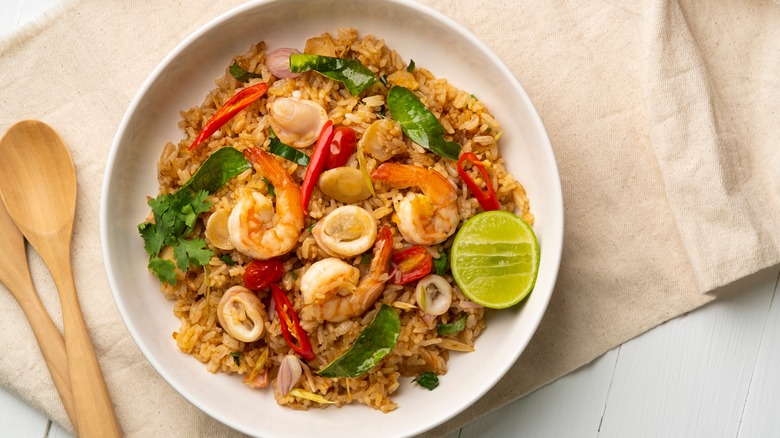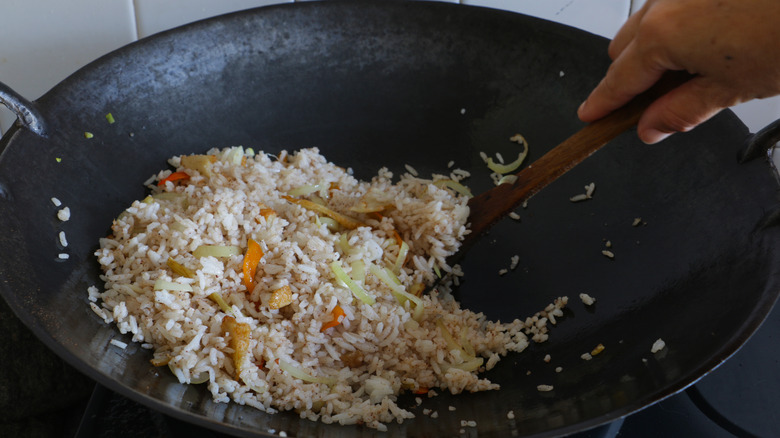What Actually Makes Restaurant Fried Rice So Good?
When we go out to a restaurant, there's usually an expectation that professional chefs can make the dishes we order better than we can at home. While fried rice is a common way to use up leftover rice and veggies at home, there's still something so good about the texture and flavor of fried rice from your favorite Asian restaurant. To get to the bottom of what actually makes restaurant fried rice so good, we've consulted Brian Griffith, executive chef at Nashville Chinese restaurant, Choy.
According to chef Griffith, its a combination of pre-planned prep work and specialized machinery. "We dry the rice very evenly after we cook it for at least 2 days and also have a very high heat [stove] that produces a quick high heat that not many people at home possess." Freshly steamed rice still has a lot of moisture that'll prevent it from absorbing the flavorful oil and aromatics you fry them with. Frying moist, fresh rice will also result in a stickier, gummier texture.
Commercial rice cookers are engineered to be as efficient and failure-proof as possible, using high heat and advanced technology to cook large quantities of rice at a time. Furthermore, the heat generated by commercial-grade stove burners is significantly greater than home appliances. But the lesson to draw from Chef Griffith's explanation is that pre-cooked rice that has been dried out into harder, separate grains is ideal for fried rice. Even our recipe for easy fried rice call for pre-cooked white rice.
Tips to achieve restaurant-worthy fried rice at home
While you may not have the commercial-grade appliances needed to cook rice on ultra-high heat, there are plenty of tips to help you achieve restaurant-worthy results. Since dry rice is the optimal vessel for flavor and textural success, drying out your rice is the best place to start. If you just prepared a batch of steamed rice, the best way to dry it out is to first let it sit and cool for about 10 minutes after steaming it. Then, pour it onto a metal baking sheet, spreading it out in an even layer. Place the rice in the fridge uncovered overnight or for up to 24 hours to dry out.
Once you've dried out your rice, you can then transfer the rice to a bowl with oiled fingers, breaking up any clumps so that the grains are evenly separated. Temperature plays an important role in the texture of fried rice. Room temperature rice and extra hot oil is the key to success. So once you've taken the rice out of the fridge, let it come to room temperature while you prepare any veggies or aromatics you add to your wok. Your stove may not be as hot as a restaurant's flame, but you can cook ingredients in stages to keep the wok as hot as possible. Start with the quickest-cooking ingredients like scrambled eggs and proteins, removing and reserving each ingredient to add back to the rice, which is the final ingredient you'll stir-fry.

